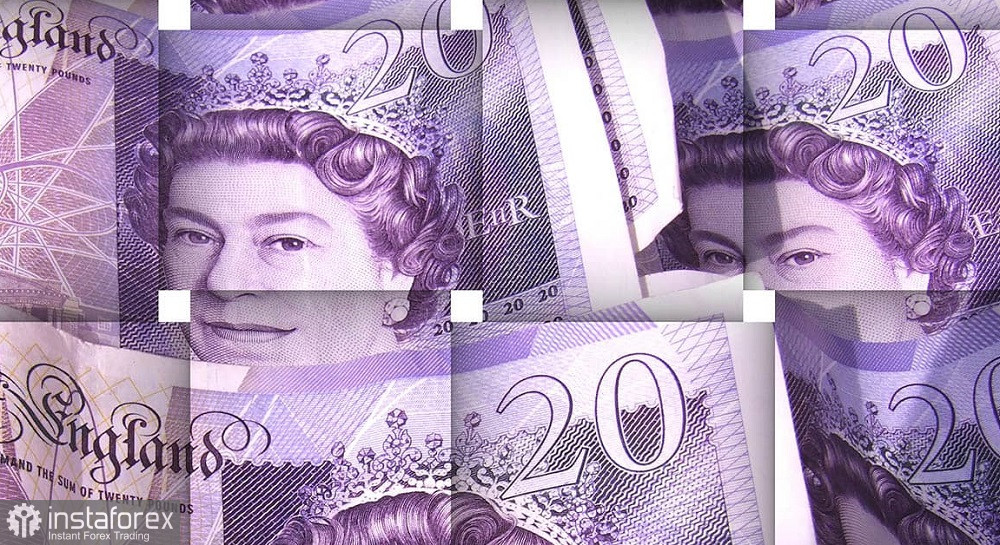The pound was testing the 29 figure against the dollar - for the first time since April 2022. This 15-month price record is due not only to the weakening of the US currency but also to the strengthening of the pound. Traders reacted to the UK labor market report. Although the data was quite contradictory, market participants interpreted it in favor of the British currency.
The prevailing fundamental backdrop made it possible for buyers to break through the 1.2850 resistance level, which has been an insurmountable price ceiling for the last three weeks. Now, traders must consolidate within the 29 figure in order to conquer a more formidable resistance level at 1.3000. However, the dollar can make this easier if it continues to plunge across the market. In this case, the key role will be played by inflation reports, which will be published this week in the US. If they fall into the "red", the GBP/USD pair will not only approach the 30 figure, but also try to establish itself in this price area.

But let's start with the latest data. As mentioned above, the UK labor market data turned out to be quite contradictory and was not in favor of the pound. Judge for yourself: the unemployment rate rose to 4.0%, while most experts were confident that the indicator would remain at 3.8%. Another component of the report also came out in the "red" - the indicator for claims for unemployment benefits. In June, the total number increased by 25,000, while analysts predicted a more modest growth by 19,000.
Only one component of the data ended up in the "green" - the wage component. The UK's Average Earnings, excluding bonuses, increased by 6.9%. This is the strongest pace of growth in the indicator since April 2022. The report recorded growth for the third straight month. Excluding bonuses, the gauge grew by 7.3%, as in the previous month (with a forecast of a decline to 7.1%).
The inflationary indicator supported the British currency, overshadowing all other flaws in the economic report.
As a result of the last meeting, the Bank of England unexpectedly raised the interest rate by 50 points at once. At the same time, the central bank made it clear that it is ready to further tighten monetary policy if inflation persists at a high level or (even more so) shows acceleration.
Reacting to the acceleration in wage growth, the yield on two-year UK government bonds rose to a high since 2008. After all, it is clear that the wage indicator will boost inflation and ultimately provoke the BoE to further raise the key interest rate.
By the way, a statement by the International Monetary Fund was published on Monday, in which its leaders welcomed the measures taken by the BoE to combat inflationary pressure - "it was right to raise them by half a percentage point last month". In the same statement, the Fund warned that "if inflation pressures persist", the central bank may have to keep interest rates high for an extended period.
BoE officials generally maintain a hawkish stance, but at the same time, they express fairly cautious formulations, thereby reserving "room for maneuver". In fact, the central bank has tied the fate of the interest rate to the dynamics of inflationary growth, not excluding both a hawkish decision and the preservation of the status quo. For example, BoE Governor Andrew Bailey commented on the current situation - according to him, the stability of the British economy puts bullish pressure on wages and demand, "thus ensuring a prolonged period of high inflation". He did not specify whether the Bank intends to take countermeasures. But overall, the preceding rhetoric of Bailey and his colleagues suggests that the Bank is ready for further steps to tighten monetary policy.
This is why the wage indicator provoked increased volatility in the GBP/USD pair (in favor of the pound), and this is why the key inflation report (CPI), which will be published on July 19, will essentially determine the fate of the BoE's August meeting, and therefore the medium-term fate of GBP/USD.
In the coming days, the pair will follow the dollar, which, in turn, will react to "its own" inflation reports. First of all - the consumer price index, and the value for June will be published on July 12.
According to the forecasts of most experts, the release will reflect a slowdown in inflation - both general and core. If the report is in the "red" (that is, the CPI will decrease at a more active pace), the dollar will be under significant pressure, and GBP/USD buyers will be able to test the next price barrier of 1.2950 (the upper line of the Bollinger Bands indicator on the 1W chart), in order to pave their way to the borders of the 30th figure. If, however, the US inflation report surprises market participants with a "green hue", the GBP/USD pair will likely return to the price range of 1.2750-1.2850, where it will drift in anticipation of data release.
 English
English 
 Русский
Русский Bahasa Indonesia
Bahasa Indonesia Bahasa Malay
Bahasa Malay ไทย
ไทย Español
Español Deutsch
Deutsch Български
Български Français
Français Tiếng Việt
Tiếng Việt 中文
中文 বাংলা
বাংলা हिन्दी
हिन्दी Čeština
Čeština Українська
Українська Română
Română

